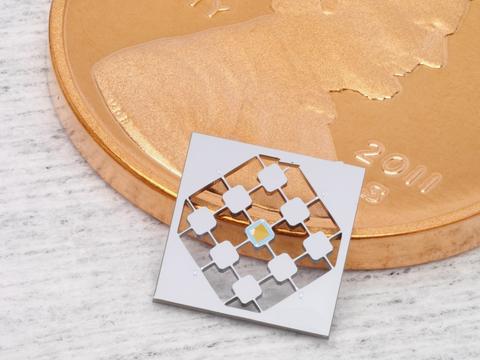
Before we can send bits of information through networks of quantum computers at different locations, we need to resolve an issue with our building blocks for the networks. That’s what NIST researchers are working on now.
THE PROBLEM: How do we connect apples and oranges?
Or rather, how do we connect superconducting circuits, a leading quantum processor contender, to optical fiber networks? The circuits use microwave signals, not optical signals. The optical fiber networks use (you guessed it) optical signals, not microwaves.
THE SOLUTION: a transducer to convert microwave bits from superconducting systems into optical bits suitable for fiber, just like the one a NIST-led team at JILA recently developed.
The key innovation is a thin sheet of tightly stretched silicon nitride (the central gold-tinged square in the device shown here), which helps to control the rate of the transducer’s mechanical vibrations, a key feature of the process. The vibrations act as a go-between to convert microwave signals to optical signals: Particles of microwave light are swapped with the smallest units of mechanical vibration as a step toward becoming particles of optical light.
The result is a conversion from microwave signal to optical signal, which can then be sent on its way through the fiber. For more details, check out the new paper in Nature that describes the device’s benefit for a fruitful computing future.
Additional funders include the Air Force Office of Scientific Research, U.S. Army Combat Capabilities Development Command Army Research Office and National Science Foundation.
Follow us on social media for more like this from all across NIST!

